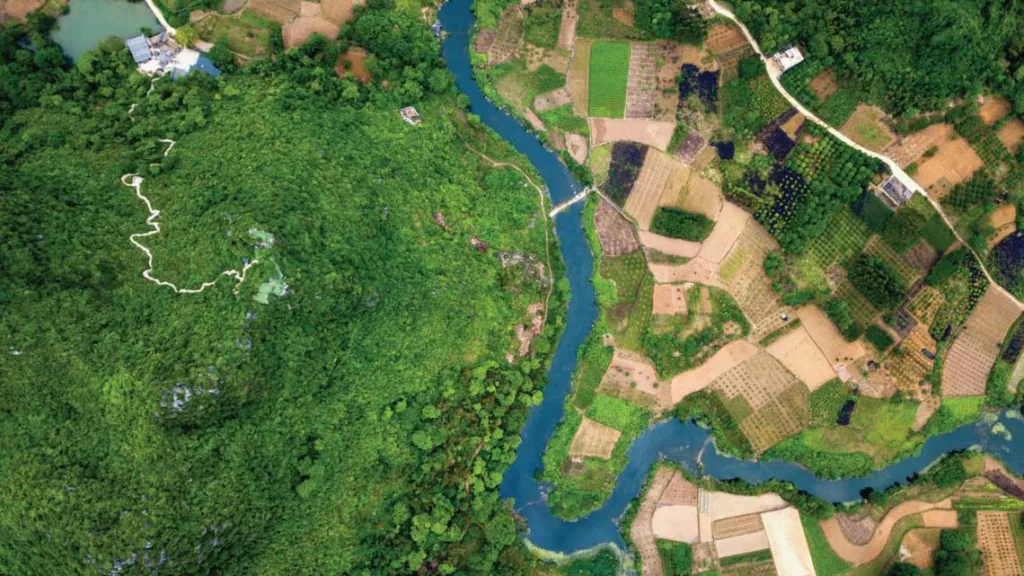Context
Climate-related disasters are increasing in frequency, causing billions of dollars in losses US dollars, and significant human and environmental costs. Such physical risks both deepen and stem from existing vulnerabilities, including deforestation, soil loss, weak urban planning, and infrastructure ill-suited to a 1.5 °C+ world.
Adaptation and resilience are set to be front and center of the COP30 climate negotiations and Action Agenda, emphasizing the need to not only save lives but to unlock significant economic, financial and social returns. The Presidency has called for non-parties to showcase real solutions making Belem the first COP focused on adaptation and implementation.
In answer to this call, WBCSD and the Global Resilience Partnership (GRP) launched the Climate Resilience Awards for Business, to accelerate adaptation in the private sector by highlighting impactful, scalable solutions.
Outcome
We received 140 submissions from 45 countries, covering more than 30 sectors. This diversity demonstrates global momentum to address climate risks with practical, inclusive, and scalable solutions.
The winners of the Climate Resilience Awards:
Strategic leadership
- Trialling innovative technologies
- Google (USA, deployed worldwide): AI-powered global flood forecasting provides free riverine warnings up to 7 days in advance
- (SME) Wave Save-Slamdam BV (Netherlands, deployed worldwide): Modular, reusable barriers that protect against floods and store water vapor-tight for irrigation/drinking-
2. Trialling Innovative methodologies or approaches
- CP Group (Thailand): Methane Reduction and Soil Carbon Sequestration in Paddy Farm
- (SME) Build Up Nepal (Nepal): local micro-entrepreneurs to produce interlocking, low-carbon eco-bricks using locally available materials such as industrial waste, ashes, and soil, requiring no firing, no electricity-
3. Trialling Innovative financing mechanism
- Standard Chartered Bank (global): Financing deals to demonstrate adaptation and resilience as investable asset class.
- Vermi-farm Initiative (Kenya): Equips over 18,000 farmers with digital finance, regenerative inputs, and data-driven tools to grow resilient livelihoods
4. COP30 Regional prize:
- Solos (Brazil): circular economy start up strengthening livelihoods for informal waste pickers.
What did we learn?
The submissions reveal how closely climate risks link to social and environmental issues and how tackling them can create wide-ranging co-benefits. An innovative dual purposes example comes from SLAMDAM (Netherlands, Global). Modular, reusable flood barriers store water vapor-tight for irrigation/drinking, shifting response from defense to productive reuse. Independent monitoring in Burundi confirmed SLAMDAM reduced flood losses and enabled irrigation of 48 hectares in the dry season. Farmers intercropped corn, beans, and vegetables, and household income doubled through year-round harvests. Communities reported improved food security, school attendance, and health spending; clear evidence of resilience built.
Many solutions intentionally target women, youth, and marginalized groups, embedding community ownership and local job creation to ensure that resilience measures are both equitable and sustainable.
Solos (Brazil) exemplifies this approach. Approximately 2 million waste pickers in Brazil mostly black women, operate predominantly in an informal economy. This initiative formalizes waste pickers’ work, creates income opportunities, and establishes transparent recycling flows aligned with municipal policies and corporate ESG goals. It improves adaptation and climate outcomes by reducing flooding, pollution, and greenhouse gas emissions. B2B Partnerships with corporates to provide custom circular economy solutions provide a sustainable business model.
The most effective interventions recognize the systemic nature of climate risks, addressing not only immediate hazards such as landslides or droughts but also underlying vulnerabilities in supply chains, g and community capacity.
Build up Nepal, working at the frontlines of climate vulnerable regions, builds supply chain resilience while creating new business opportunities and climate-adaptive housing. Build up Nepal trains local entrepreneurs to produce low-carbon, interlocking eco-bricks that reduce CO₂ emissions by 75%, vs traditional fired-brick construction, reduce construction costs by 25%, air pollution by 90% and build homes that withstand floods and earthquakes.
The award submissions demonstrate that building resilience requires not only technical innovation but also social engagement, community empowerment, and an understanding of interconnected systems. By learning from these examples, corporates taking an integrated approach can ensure that climate adaptation is sustainable, equitable, and transformative.
What types of solution were there?
The Climate Resilience Awards submissions showcased a remarkable diversity of solutions, many of which are rooted in nature-based and circular economy models. Projects frequently turn waste into valuable resources, such as compost, biochar, clean energy, and biodegradable packaging, demonstrating how circular approaches can simultaneously address environmental and economic challenges. Nature-based solutions—including agroforestry, regenerative agriculture, and ecosystem restoration—are widely adopted for their co-benefits, such as carbon sequestration, improved soil health, and enhanced water management.
Technology and digital innovation are increasingly central to resilience-building efforts. IoT sensors, AI-driven platforms, satellite data, and mobile apps are being used for early warning, monitoring, and optimizing resource use. Google’s AI-powered global flood forecasting provides free riverine warnings up to 7 days in advance, including data-scarce regions, -critical for the Low- and Middle-Income Countries (LMIC)- boosting climate resilience. The core innovation is solving the “prediction in ungauged basins” challenge. Applying AI models to forecasts in data-scarce regions like Africa and Asia can improve the reliability of riverine flood forecasting to be similar to the forecasts currently available in Europe.
Decentralized infrastructure is another common theme, with modular, community-managed hubs for waste processing, or water purification, many combined with on-site renewable energy generation increasing local ownership and adaptability of initiatives
Inclusive, context-specific finance models for climate finance mobilization—including blended finance, grants, impact investment, carbon credits, and microfinance—are critical for scaling these solutions. Vermi-farm Initiative (Kenya) has developed an integrated model, to strengthen the resilience of smallholder farmers. At its core are climate-smart greenhouses, made possible by AI-driven, climate-linked microloans and savings delivered through Village Banks and accessible on the Vermi-Farm Yetu Wallet via USSD, NFC cards, QR codes, and WhatsApp. Digital tools ensure secure, low-cost transactions even in rural areas with limited connectivity. Farmers are further protected through weather-indexed insurance, which automatically triggers payouts based on rainfall and satellite data, reducing delays and disputes.
At the other end of the spectrum Standard Chartered Bank, has demonstrated the potential for adaptation and resilience as an investible asset class, through its first deal to be tagged as ‘adaptation finance’. It provided Bank Guarantees, to facilitate the trade of storm and extreme-weather resilient solar modules for Jinko Solar Co. to solar farms in the US, UAE and Saudi Arabia. The breakthrough shows potential to scale within the bank and other financial institutions.
Policy and partnerships also play a vital role, with many projects integrating public–private collaboration, alignment with government programs, and national adaptation plans. CP Group (Thailands)’s Alternate Wetting and Drying project demonstrates such alignment. Its adaptive practices to reduce methane and sequester carbon in the soil, (while maintaining yields and reduces water use)are carried out in partnership with public agencies, including Geo-Informatics and Space Technology Development Agency, to improve monitoring reporting and verification (MRV), to ensure integrity of associated carbon credits and contributions to national climate goals.
And what challenges do these companies face?
Despite the creativity and commitment evident in these solutions, several persistent challenges remain:
- Adoption barriers: Resistance to new practices, such as switching from synthetic to organic inputs or adopting digital tools, especially where traditional methods are deeply rooted.
- Equity and inclusion: Ensuring that the benefits of resilience initiatives reach the most vulnerable—smallholders, women, youth, and remote communities. Without careful design, there is a risk of elite capture or exclusion.
- Technical and infrastructure constraints: Limited access to reliable energy, internet, transport, and skilled labor can slow implementation, particularly in rural or fragile contexts.
- Sustained financing: Many projects struggle to mobilize sufficient, long-term resources, especially for early-stage or community-led initiatives. Over-reliance on grants or donor funding can threaten sustainability.
- Regulatory and policy hurdles: Navigating complex or inconsistent regulations—whether for waste, insurance, or land use—can delay or limit scaling.
- Climate and environmental risks: Interventions must be carefully managed to avoid maladaptation, such as overharvesting resources or creating new dependencies, and to ensure that interventions do not inadvertently harm ecosystems or social structures.
What can business learn from these experiences?
The submissions highlight several key lessons and success factors for building climate resilience:
- Early and continuous engagement of local communities, especially women and youth, is essential for adoption, ownership, and sustainability. Peer-to-peer learning, demonstration and participatory planning build trust and accelerate uptake.
- Integration and bundling of technical solutions—such as climate-smart inputs, digital finance, and insurance—with training, capacity building, and market access, deliver greater resilience than isolated interventions.
- Flexible, contextual approaches are critical; solutions must be tailored to local climate, culture, infrastructure, and market realities, with piloting, learning, and adapting at the core of successful projects.
- Alignment with regional adaptation strategies via public- private collaboration with public bodies, NGOs and research institutions can unlock resources
- Real-time monitoring, data-driven decision-making, and transparent reporting build credibility with communities, investors, and policymakers, enabling adaptive management.
- Long-term success depends on building financially viable models—through blended finance, carbon credits, or market-based approaches—integrating resilience into core business or service delivery, and planning for scale from the outset.
- Proactive identification and mitigation of potential negative side effects, such as equity gaps, environmental trade-offs, or cultural resistance, are necessary to avoid maladaptation and ensure that resilience gains are inclusive and durable.
How can business get involved?
COP30 in Brazil offers a pivotal moment to act to move from ‘awareness to alignment, from pledges to progress’ (Ana Toni, COP30 CEO), The submissions to the Climate Resilience Awards for Business have provided rich material to develop a pipeline of resilience actions for the Business Action Bank and Action Library (EN) – The Climate Drive. By sharing approaches, evidence, and lessons learned, we hope companies can replicate, scale, and leapfrog hurdles to success, continuing to drive the narrative and business case for investing in adaptation and resilience.
Some challenges will remain, and we invite corporates and potential partners to connect with us on our adaptation and resilience work to collaborate and co-create solutions that address these barriers and drive corporate climate adaptation and resilience.
Final note
WBCSD and GRP teams thoroughly enjoyed reading the submissions, which were both informative and inspiring. We thank all companies who participated and encourage those not shortlisted or finalists of the 2025 awards to consider reentering their submissions, or future efforts, in future iterations—watch this space.
For more information about this initiative, please reach out to Lucy Moran Lucy.moran@wbcsd.org and Madeline Ojakovoh Ojakovoh@wbcsd.org.
Outline
Related
Content

Leading with Purpose: Business Leaders Guide to a Just Climate Transition Out Now
3 November, 2025

Activating the organization for climate mitigation and adaptation
27 October, 2025

Business at the forefront of climate action: WBCSD Council Meeting and Climate Week New York 2025
30 September, 2025
